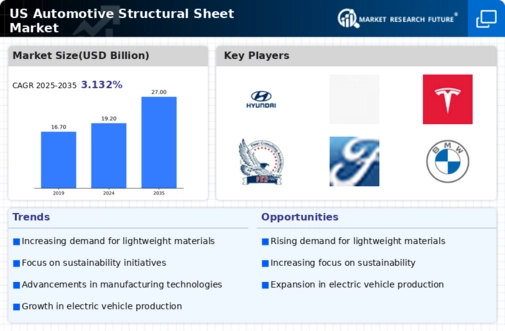The US Automotive Structural Sheet Market is characterized by a dynamic landscape where various manufacturers are vying for a significant share through their innovative products and strategic initiatives. This market involves the production and supply of metal sheets used in the construction of automotive frames and other structures, playing a vital role in enhancing vehicle safety, performance, and lightweighting initiatives. The competitive insights reveal a growing emphasis on advanced materials technology, cost-effective production methods, and sustainability efforts, shaping the strategies of key players in the industry.
Companies are continuously looking to leverage emerging technologies and optimize their operations to cater to the evolving demands of consumers and environmental regulations, thus creating a competitive edge in the increasingly competitive landscape.Subaru Corporation has established a robust presence in the US Automotive Structural Sheet Market, particularly noted for its commitment to quality and safety. The company has been focusing on producing high-strength structural sheets that enhance the durability and performance of its vehicles. One of Subaru's strengths lies in its dedication to research and development, allowing the firm to innovate and implement advanced materials into their automotive designs.
This focus on safety has positioned Subaru positively among consumers who prioritize reliability in their vehicle choices. The company's production facilities in the US also contribute to its local market presence, ensuring efficient supply chain management and responsiveness to customer needs.Hyundai Motor is strategically positioned in the US Automotive Structural Sheet Market, recognized for its innovative design and manufacturing techniques that address the current automotive trends. The company offers a wide range of automotive structural sheets that are essential for producing lightweight, fuel-efficient vehicles without compromising safety.
Hyundai's market presence is strengthened by its significant investments in technology and production capabilities within the US, further bolstering its competitiveness. The firm has made notable strides through mergers and acquisitions, enabling it to enhance its product offerings and streamline its manufacturing processes. This adaptability and focus on customer preferences, along with a reputation for quality, have helped Hyundai maintain its standing as a formidable player in the market, continuously aligning itself with industry advancements and consumer demands.























Leave a Comment